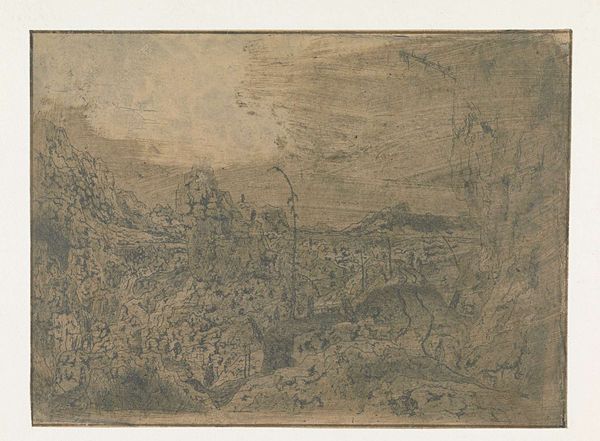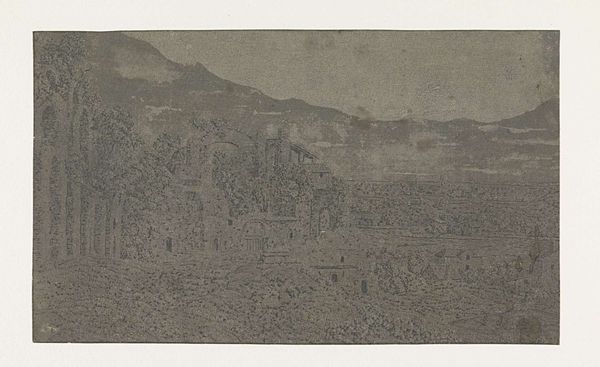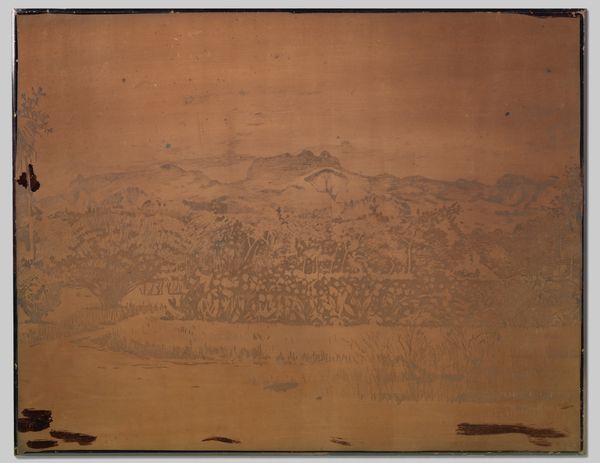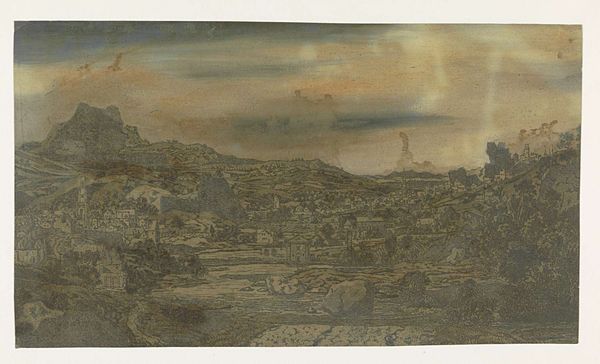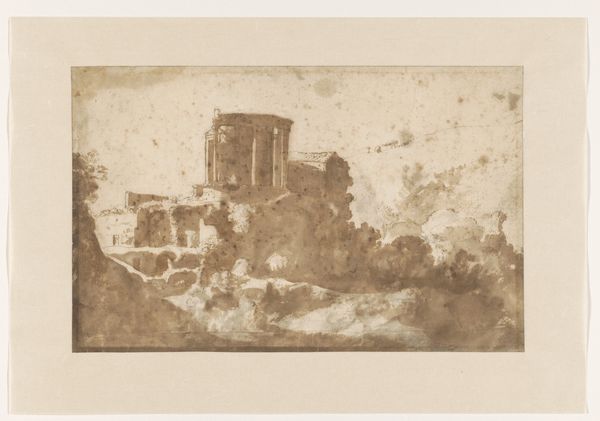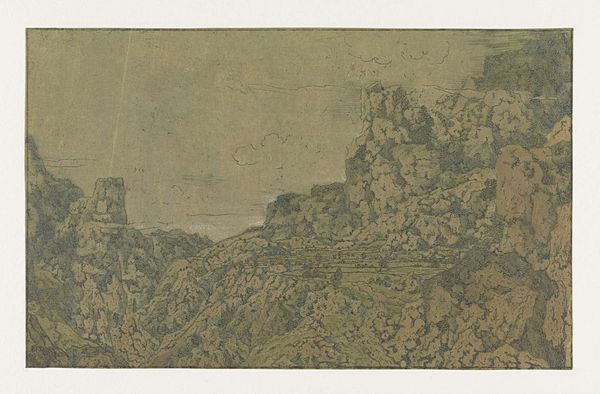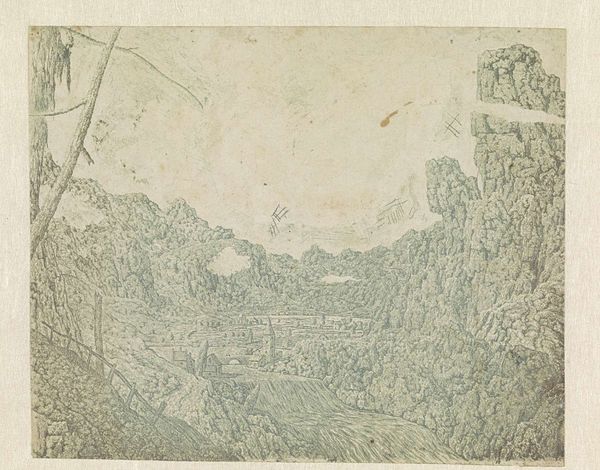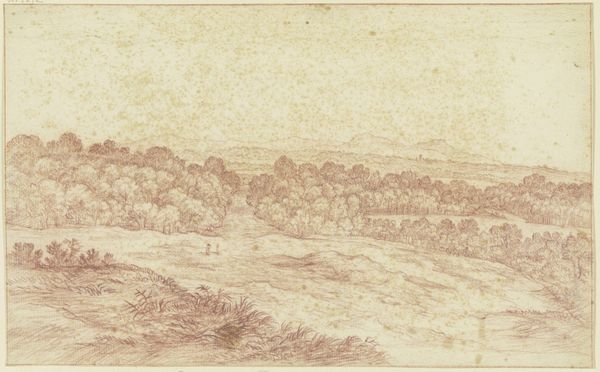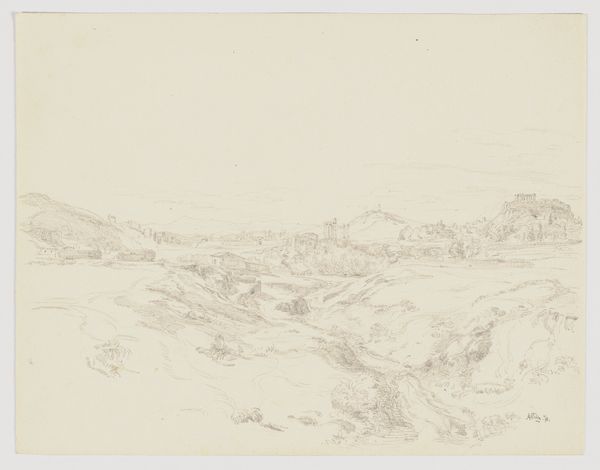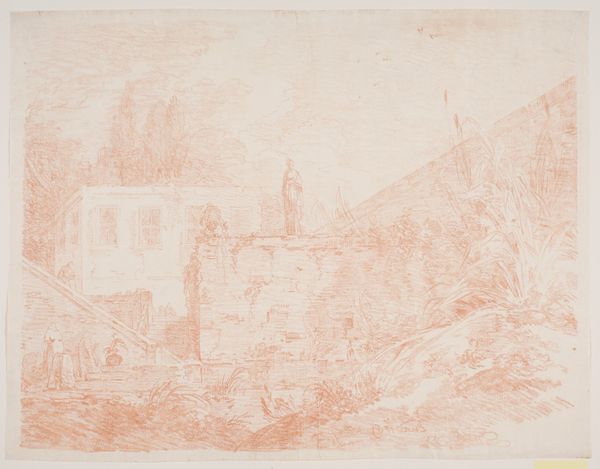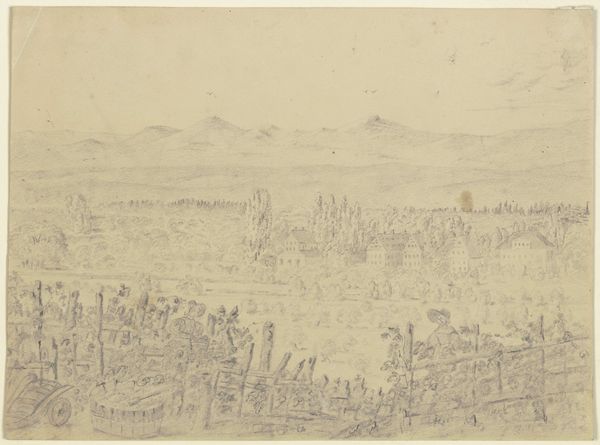
etching
#
baroque
#
etching
#
pencil sketch
#
landscape
#
etching
#
cityscape
Dimensions: height 204 mm, width 330 mm
Copyright: Rijks Museum: Open Domain
Curator: Hercules Segers created this etching, titled "Valley with a River and a Town with Four Towers," around 1626 or 1627. It's currently housed in the Rijksmuseum. What strikes you about it? Editor: Immediately, I'm drawn to the textures, almost like looking at worn fabric. It makes me consider the layers of labor involved. How were prints like these circulated and consumed back then? Was Segers part of a printmakers’ workshop? Curator: Absolutely, those are crucial points! We often overlook the socio-economic structures that facilitate art production. Consider, too, the visual culture and societal norms of the Dutch Golden Age. How did Segers's landscape resonate or challenge dominant views of the time, perhaps through class associations with depictions of rural labor? Editor: Yes! The materiality gives us so much to consider. I see a town nestled in this almost hazy, sepia-toned valley. The process seems less about portraying pristine nature and more about a dialogue with decay, with the evidence of human labor literally etched onto the plate. The color creates this unique look. Curator: His printmaking techniques were revolutionary. Segers was experimenting with color and texture in unprecedented ways, essentially treating each print as a unique artwork. Editor: It feels deliberate. Not just landscape as representation, but as a commentary. Is Segers glorifying or critiquing the effects of commerce on the landscape with his focus on means of production? Or does his technique speak for itself by suggesting its integration with a particular societal background? Curator: That is a critical question for contemporary art discourse! This era was the genesis of capitalism, as you mentioned, and his depictions carry both the excitement of discovery and colonial expansion with the somber reality of societal shifts at the level of lived daily existence. The very tones could evoke something new: the color of industry on the old landscapes, where commerce meets nature in a sense. Editor: I’ll certainly carry the impact of this discussion forward to how materiality engages directly with social experience. Curator: It underlines art's unique capacity to embody a culture’s ethos. Thinking about the human imprint is just what art challenges us to examine in our contemporary age, and vice versa.
Comments
No comments
Be the first to comment and join the conversation on the ultimate creative platform.
